There's a Simple Fix for the Problem of Dirty Needles
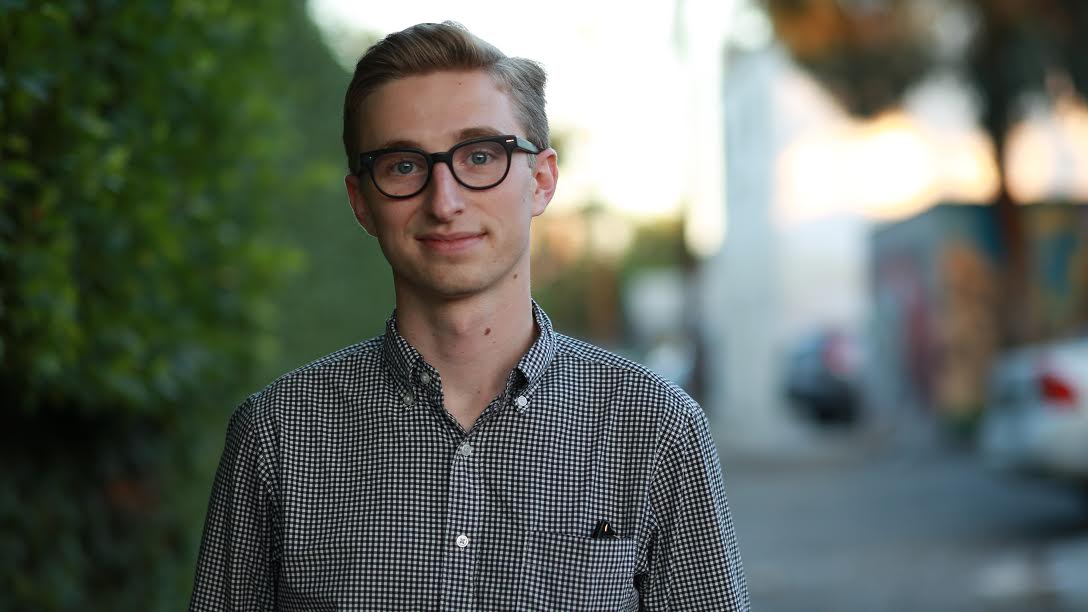
By:
It's a constant reminder of the heroin crisis: used syringes leftover on the sidewalk, in alleys, along beach shores, scattered around a bench at your local park.
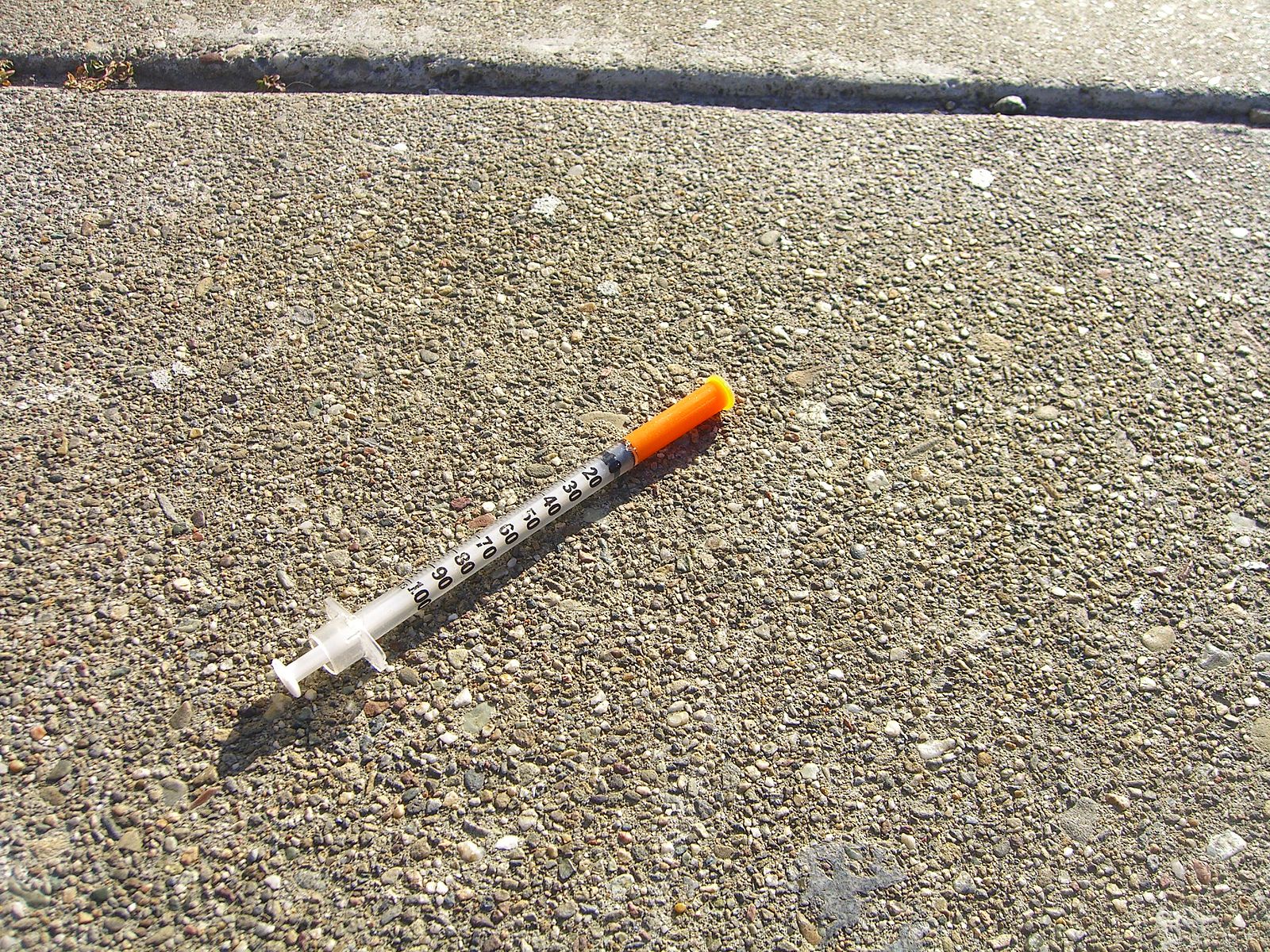 eric molina/Wikimedia - wikimedia.org
eric molina/Wikimedia - wikimedia.org
There have been a handful of accounts of children stepping on needles and accidentally pricking themselves—or in one case, mistaking a needle for a thermometer and sticking it in her mouth. The needles do represent a health risk, as they could be contaminated with blood or leftover drugs, but there haven't been any reported cases of someone dying or getting seriously ill from improperly disposed paraphernalia.
But leftover needles are more than a public health hazard.
Harm reduction advocates see "needle pollution"—a term that's emerged in the wake of the opioid epidemic—as a consequence of drug criminalization that's entirely avoidable. In fact, the solution is more simple than you might think.
Want to prevent users from ditching paraphernalia in public places?
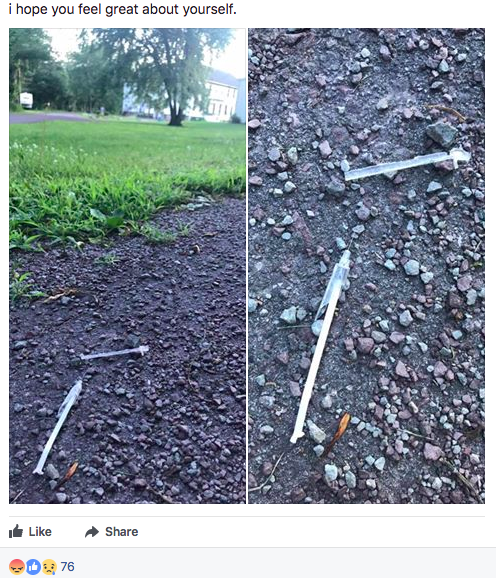 Facebook - facebook.com
Facebook - facebook.com
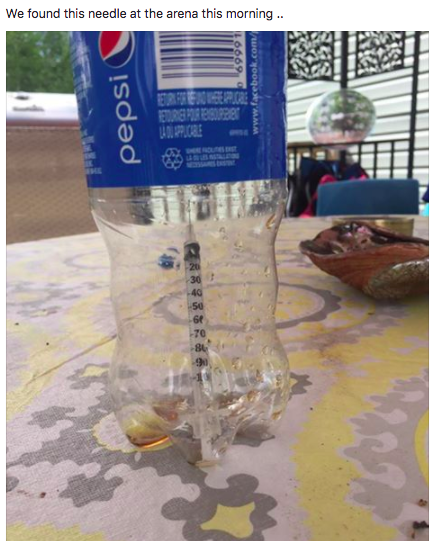 Facebook - facebook.com
Facebook - facebook.com
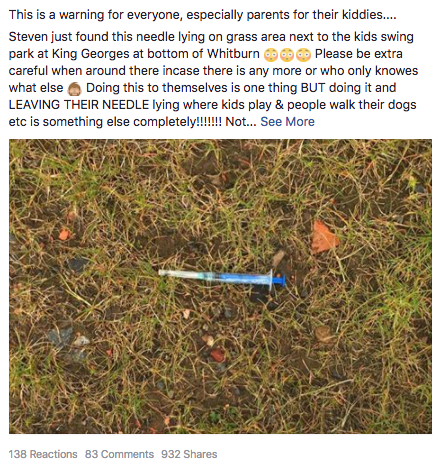 Facebook - facebook.com
Facebook - facebook.com
Then invest in needle exchange programs, harm reduction advocates argue.
Needle exchange programs offer drug users free, sterile needles—sometimes with no strings attached, other times requiring them to turn in used needles to limit needle pollution and reduce the risk of disease transmission.
There's a body of research demonstrating the effectiveness of needle exchange programs in preventing new cases of Hepatitis C and HIV, which can be spread though exposure to infected blood. What's more, syringe exchange programs "connect the population of injection drug users with health care," including "treatment and counseling," according to the National Institute on Drug Abuse (NIDA).
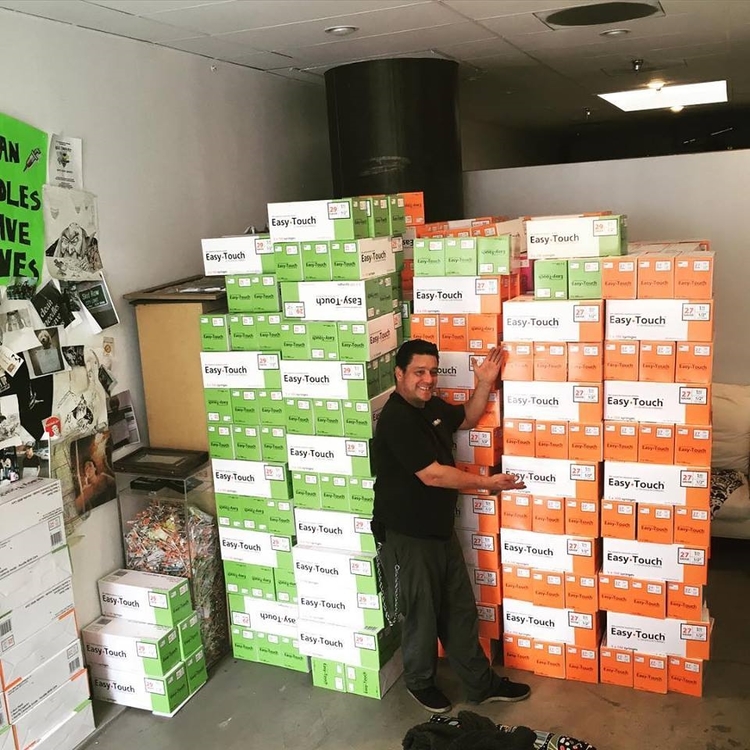 LACHP - chpla.org
LACHP - chpla.org
Not all drug users will make use of resources such as needle exchanges or safe injection sites, where users are invited to inject in a medically supervised environment using sterile needles and are offered assistance for get treatment. However, cities that support these harm reduction initiatives have seen impressive results.
"Researchers consider these centers an important reason for the 80-percent decline in HIV infections among heroin and other injection-drug users between 1990 and 2006," the Pacific Standard reported. "Research has also shown the programs don't encourage additional drug use."
If these programs are known to work, why haven't they been more widely adopted?
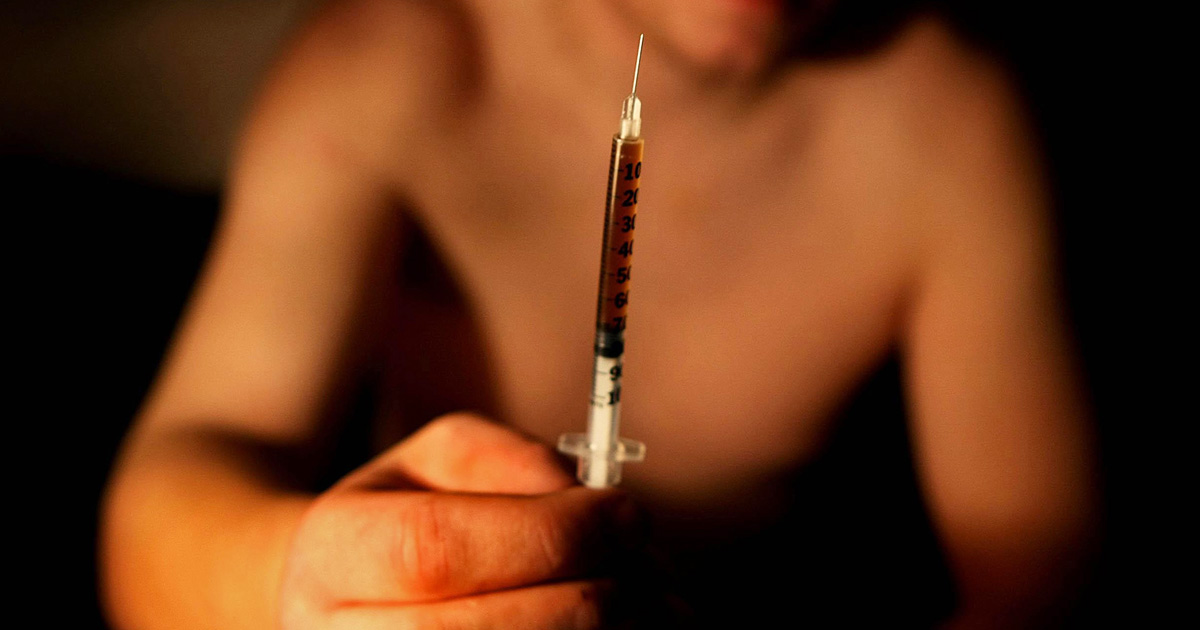 AP/Julien Behal - apimages.com
AP/Julien Behal - apimages.com
Launching these programs can be politically tricky. Though laws prohibiting the use of federal funds for needle exchange programs have been largely lifted in recent years, funds "still may not be used to buy injection equipment," The New York Times reported.
But as the U.S. continues to combat record rates of opioid abuse, there's a renewed push to implement evidence-based, harm reduction policies. Higher rates of opioid addiction has caused an infusion of dirty needles in public spaces; in San Francisco, for example, the city picked up 13,000 used needles in March 2017, compared to about 2,900 the year before, according to NBC News.
